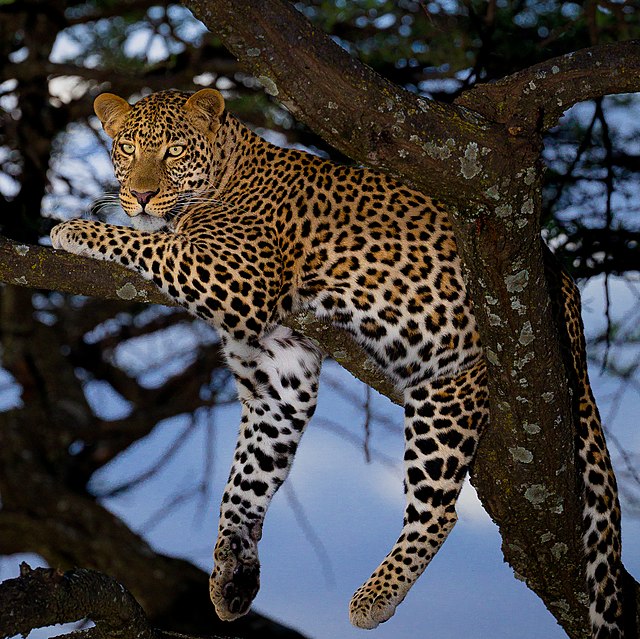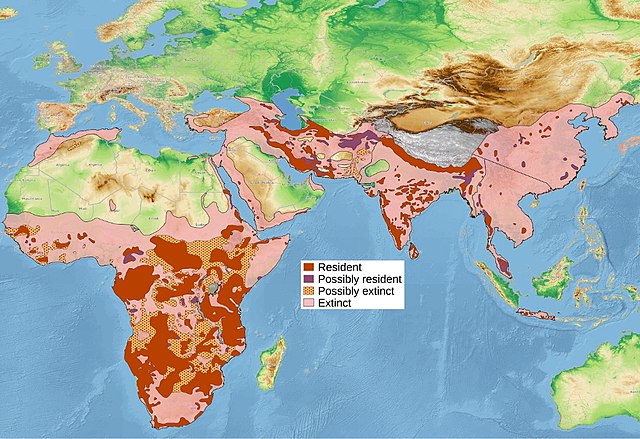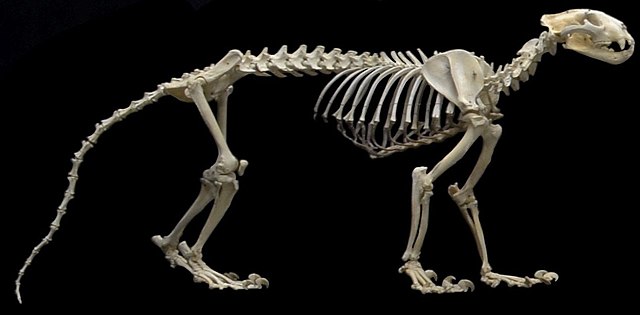The leopard is one of the five extant species in the genus Panthera. It has a pale yellowish to dark golden fur with dark spots grouped in rosettes. Its body is slender and muscular reaching a length of 92–183 cm (36–72 in) with a 66–102 cm (26–40 in) long tail and a shoulder height of 60–70 cm (24–28 in). Males typically weigh 30.9–72 kg (68–159 lb), and females 20.5–43 kg (45–95 lb).
Image: African leopard male (cropped)
Image: Leopard distribution
Mounted skeleton
Rosettes of a leopard
A species is often defined as the largest group of organisms in which any two individuals of the appropriate sexes or mating types can produce fertile offspring, typically by sexual reproduction. It is the basic unit of classification and a taxonomic rank of an organism, as well as a unit of biodiversity. Other ways of defining species include their karyotype, DNA sequence, morphology, behaviour, or ecological niche. In addition, paleontologists use the concept of the chronospecies since fossil reproduction cannot be examined. The most recent rigorous estimate for the total number of species of eukaryotes is between 8 and 8.7 million. About 14% of these had been described by 2011. All species are given a two-part name, a "binomial". The first part of a binomial is the genus to which the species belongs. The second part is called the specific name or the specific epithet. For example, Boa constrictor is one of the species of the genus Boa, with constrictor being the species' epithet.

All adult Eurasian blue tits share the same coloration, unmistakably identifying the morphospecies.
Ernst Mayr proposed the widely used Biological Species Concept of reproductive isolation in 1942.
Palaeontologists are limited to morphological evidence when deciding whether fossil life-forms like these Inoceramus bivalves formed a separate species.
Blackberries belong to any of hundreds of microspecies of the Rubus fruticosus species aggregate.








